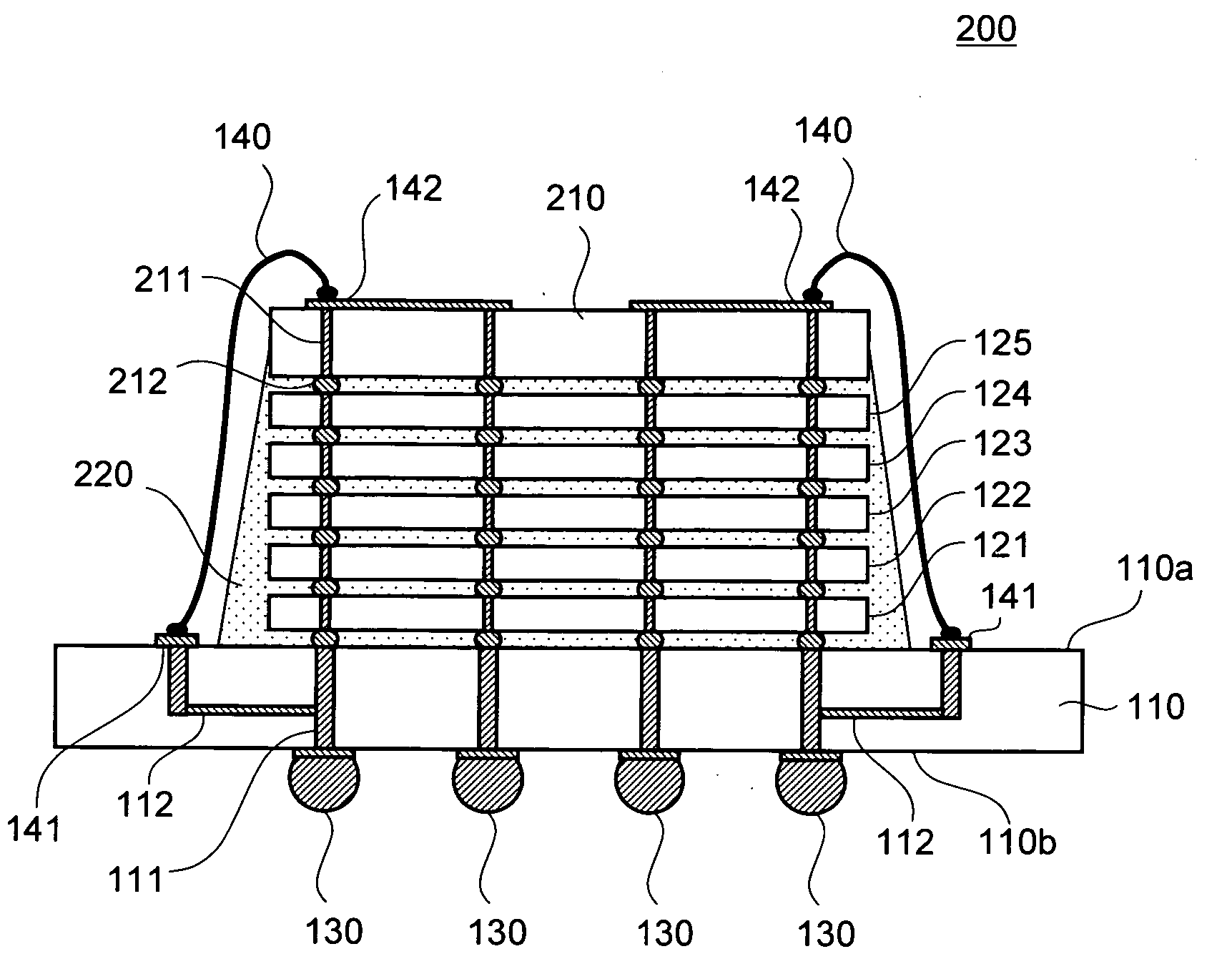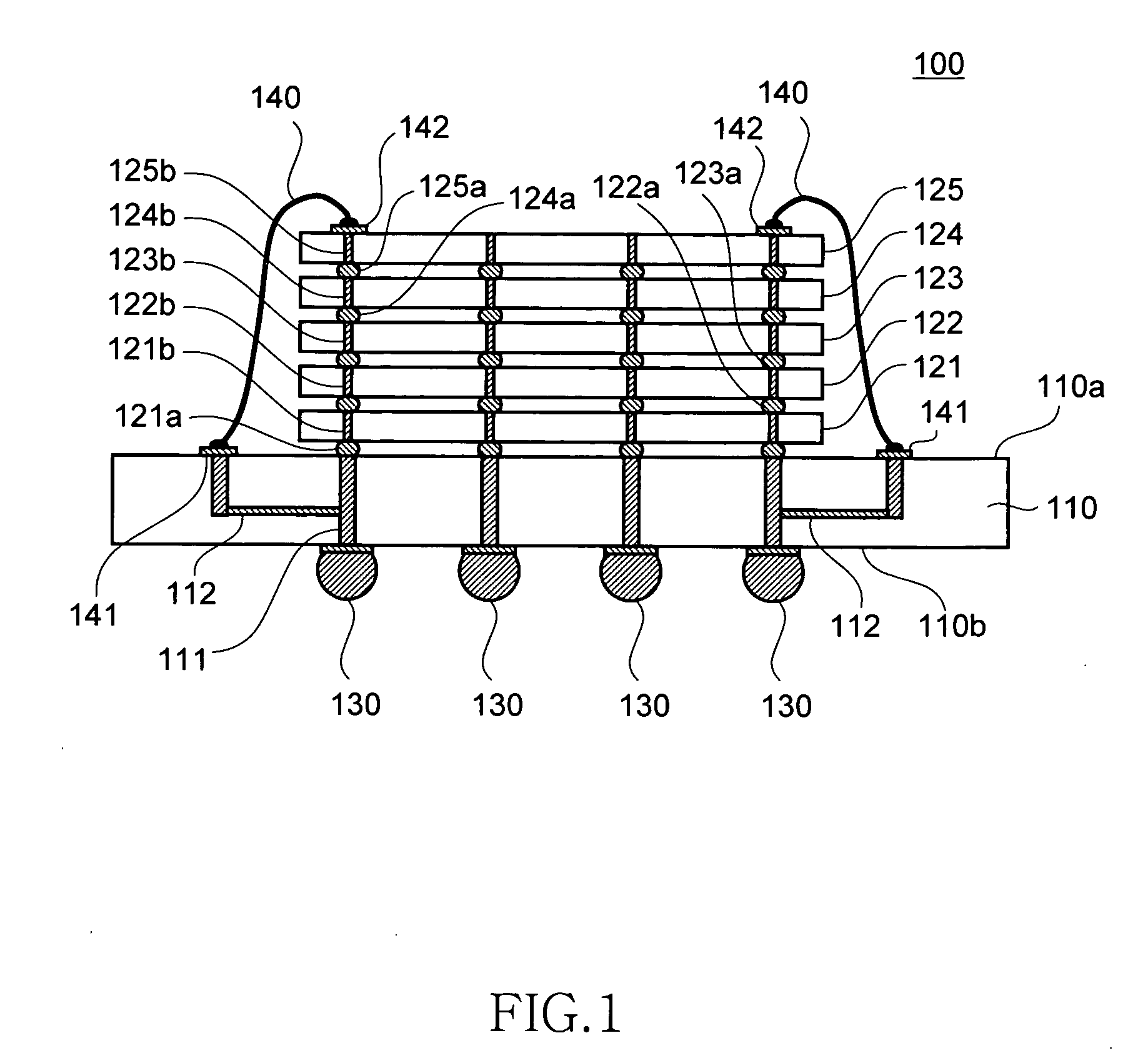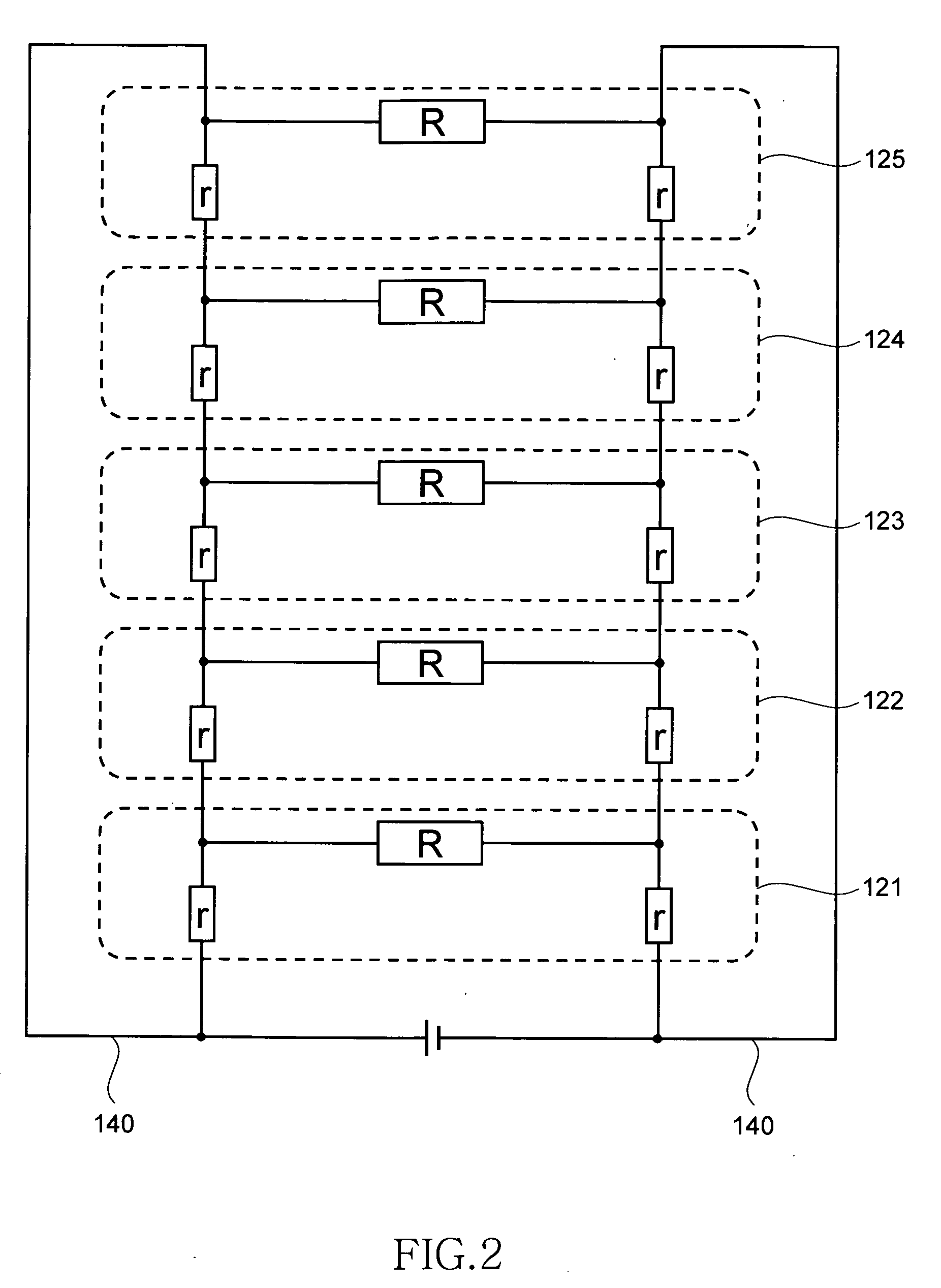Stacked semiconductor device
a semiconductor device and stacked technology, applied in semiconductor devices, semiconductor/solid-state device details, electrical devices, etc., can solve the problems of physical limitation of memory cell miniaturization, affecting the operation speed of memory cells, reducing yield, etc., to achieve the effect of suppressing a power source voltage drop, reducing voltage drop level, and easy supply of power source potential
- Summary
- Abstract
- Description
- Claims
- Application Information
AI Technical Summary
Benefits of technology
Problems solved by technology
Method used
Image
Examples
first embodiment
[0037]FIG. 1 is a schematic cross sectional view showing a structure of a stacked semiconductor device 100 according to a preferred first embodiment of the present invention.
[0038]As shown in FIG. 1, the stacked semiconductor device 100 according to the present embodiment includes an interposer substrate 110, five semiconductor chips 121 to 125 stacked on one surface 110a of the interposer substrate 110, and external power supply terminals 130 arranged on the other surface 110b of the interposer substrate 110. While types of the semiconductor chips 121 to 125 are not particularly limited, core chips or interface chips, or the both chips can be used, when the stacked semiconductor device according to the embodiment is a DRAM. The number of stacked semiconductor chips is not limited to five, as long as it is two or more.
[0039]Besides the external power supply terminals 130, external signal terminals that input and output addresses, data, commands and the like are formed on the other s...
second embodiment
[0050]A stacked semiconductor device according to the present invention is explained next.
[0051]FIG. 3 is a schematic cross sectional view showing a structure of a stacked semiconductor device 200 according to the second embodiment.
[0052]As shown in FIG. 3, the stacked semiconductor device 200 according to the second embodiment is different from the stacked semiconductor device 100 according to the first embodiment in that a cap substrate 210 is arranged above the semiconductor chip 125 and an underfill material 220 is arranged between the interposer substrate 110 and the cap substrate 210. Since the rest of the configuration is basically the same as that of the stacked semiconductor device 100 according to the first embodiment, like parts are designated with like reference numerals, and redundant explanations will be omitted.
[0053]The cap substrate 210 serves to protect the semiconductor chips 121 to 125 from an impact generated at the time of bonding. That is, in the first embodim...
third embodiment
[0060]A stacked semiconductor device according to the present invention is explained next.
[0061]FIG. 5 is a schematic cross sectional view showing a structure of a stacked semiconductor device 300 according to the third embodiment.
[0062]As shown in FIG. 5, the stacked semiconductor device 300 according to the present embodiment is configured such that ten semiconductor chips 320 to 329 are stacked on the interposer substrate 110; a cap substrate 330 is arranged above the semiconductor chip 329 located in the top layer; and an intermediate interposer substrate 340 is arranged between lower-half five layers of the semiconductor chips 320 to 324 and upper-half five layers of the semiconductor chips 325 to 329.
[0063]The cap substrate 330 serves the same role as that of the cap substrate 210 used in the second embodiment. That is, the cap substrate 330 serves to lessen an impact generated at the time of wire bonding. The bonding wire 140 is connected to the bonding pad 142 arranged on th...
PUM
 Login to View More
Login to View More Abstract
Description
Claims
Application Information
 Login to View More
Login to View More - R&D
- Intellectual Property
- Life Sciences
- Materials
- Tech Scout
- Unparalleled Data Quality
- Higher Quality Content
- 60% Fewer Hallucinations
Browse by: Latest US Patents, China's latest patents, Technical Efficacy Thesaurus, Application Domain, Technology Topic, Popular Technical Reports.
© 2025 PatSnap. All rights reserved.Legal|Privacy policy|Modern Slavery Act Transparency Statement|Sitemap|About US| Contact US: help@patsnap.com



